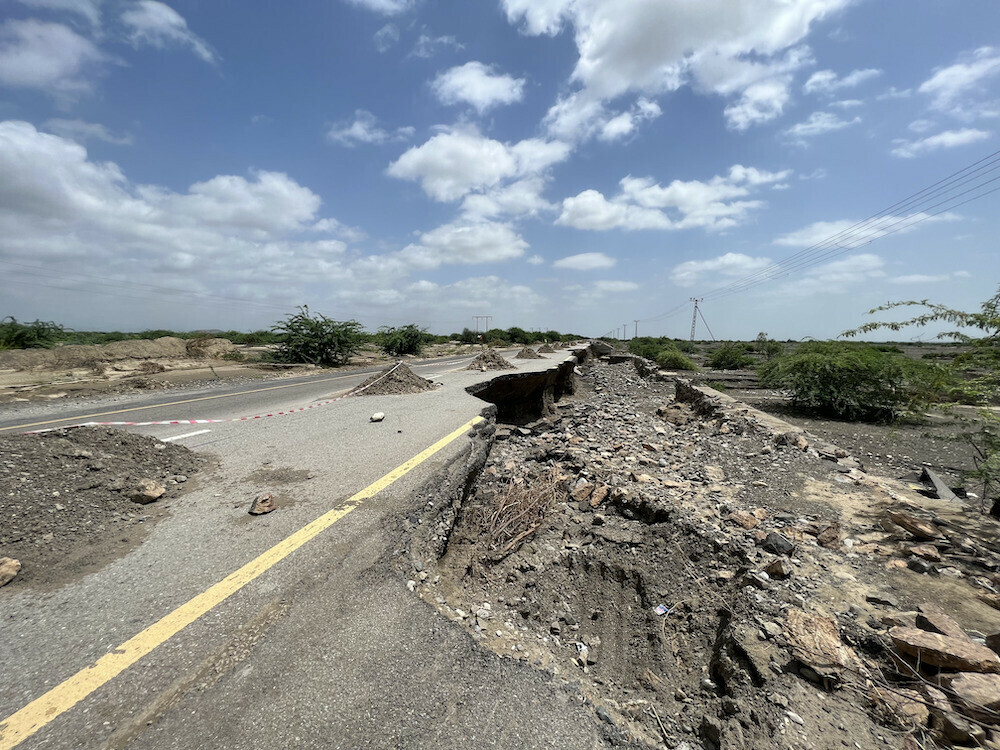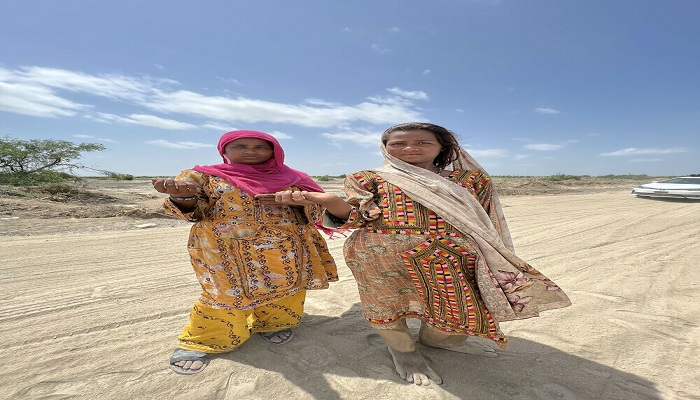First-time visitors to Bela probably won’t even see the flood damage. To begin with, the infrastructure in this small town in the Lasbela district of Balochistan was severely lacking.
If you stay for a while, you’ll see that the irony isn’t lost on the locals. At least this city has gained some notoriety as a result of the devastating floods that have killed over 1,300 people and affected over 33 million.
The women spanning the major highway with their arms outstretched seem to sense the irony of your air-conditioned automobile slamming on the brakes to avoid a 10-foot crater in the pavement.
The voices of kids who follow you around barefoot and humbly ask for snacks are a perfect example of this irony.
The most telling sign of this is the look of dismay on their faces when you inform them you are not a relief worker and cannot help them.

Almost 65% of Bela’s population has been affected by the floods, as stated by Assistant Commissioner Hamza Anjum, who is responsible for the Bela and Uthal tehsils.
He says, “Bela has a total population of 104,000, out of which roughly 65,000 people have been affected.”
He then gestures toward a pile of papers on which the names and addresses of the affected persons are written.
Most of the people here make their living in agriculture, with animals providing a safety net for the fortunate few.
Anjum concedes that, while having a well-planned procedure in place, there is space for improvement, particularly in regards to coordination for the distribution of relief commodities coming in through NGOs and private groups, as he describes his ideas for ration distribution in detail.
His government is concerned that “certain NGOs are functioning in isolation,” leading to repeated distributions of aid to the same individuals: “We don’t want these folks to become beggars.”
Because of this, he says, they are only supplying enough food for a week so far in case the rains cause more damage.
To paraphrase, “We want them to be self-reliant and build themselves back up.”
Our car follows him across a boulder field to a relief camp where a village once stood, and his point about volunteers coordinating with local officials becomes more and more apparent with each passing moment.
The more destruction we observe, the more difficult it seems that AC Anjum and his crew will have in instilling a feeling of self-sufficiency in the people who are still gathering up the remains of their scattered homes.
An elaborate network of canals and tributaries supplied by the Pulari River, which flows through Khuzdar, irrigates the land. Because of the recent floods, this river swelled as water poured down from the mountains, overflowing its banks and destroying hundreds of homes and thousands of acres of standing cotton crop in its wake.
There have been 263 deaths and 166 injuries due to the floods in Balochistan, as reported in the daily situation report provided by the National Disaster Management Authority (NDMA) on September 8.
The destruction of about 64,000 dwellings is estimated to be in the thousands.
Mahnur is MS(development Studies)Student at NUST University, completed BS Hons in Eng Literature. Content Writer, Policy analyst, Climate Change specialist, Teacher, HR Recruiter.










